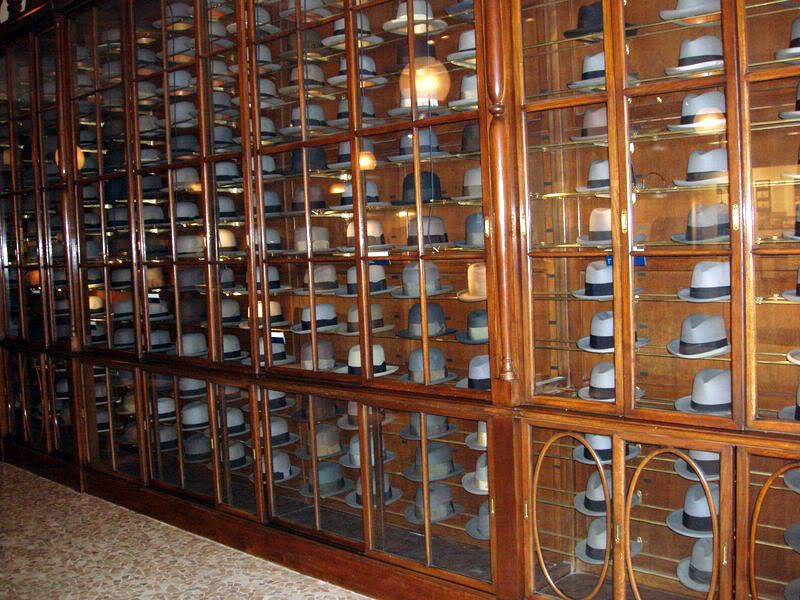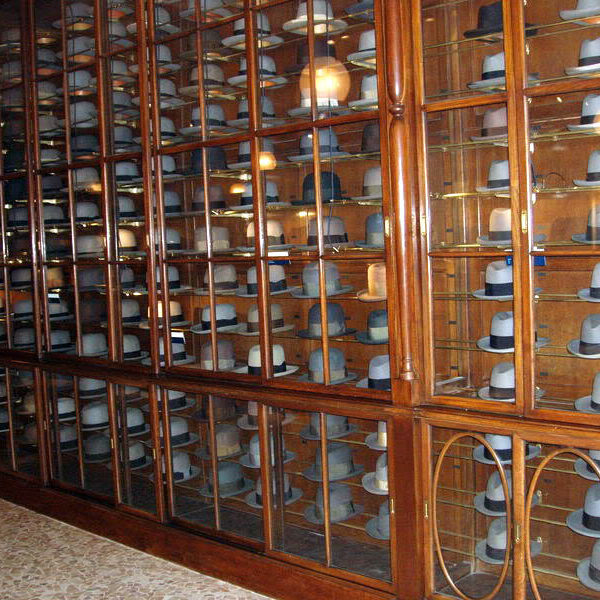
Ian writes: Your posts have repeatedly stressed the importance of quality hats, and explained that it’s very hard to find any newly made hats that aren’t prohibitively expensive that are of the necessary quality. What, other than the price, separates a $500+ hat from Optimo from, say, something in Goorin’s ~$120 American Made line?
That’s a great question, Ian. There are different kinds of hats, so I’ll address each type separately.
Flat caps and other wool and cotton caps are a lot like other types of apparel. You’ll find that finer makers use higher-quality materials and construction techniques. I have a couple of Borsalino flat caps that are about fifteen years old. They’ve got silk satin liners and beautiful tweed outers. There’s a difference in quality between them and what I might buy at Macy’s. Still, the spread on price is probably much larger than on quality in this area. If you can find good hats of this type made of quality materials for a lesser price, go for it. Watch out for the polyester that dominates the lower end of the market, though.
With Panama and other straw hats, it’s the weave that makes the difference. Quality Pananamas are flexible, not stiff, and they’re made of soft, fine fibers. There are advantages to a less dense weave – it will wear cooler – but the mark of quality is weave density. A denser, finer weave is more labor-intensive to produce, and thus more expensive to buy. What you’ll find, though, is that it gives the hat a more finished appearance, and much more life. There are still makers who make high-quality Panamas, but they’re tough to find. Optimo, who you mentioned, are one.
As with Panamas, there’s a huge range in quality with fur felt hats. Lower-quality hats, like the ones you asked about, are made with wool felt. Better hats are often made with coney or rabbit fur felt. The best are made with beaver felt. Of course, the beaver-trapping industry isn’t what it once was, so it can be tough to find beaver hats these days outside of specialty custom makers (like Optimo).
A high-quality felt hat has a dense finish. This is a result of the felting process – the fur is crushed and shrunk repeatedly as it is transformed from fur to felt. It can be a variety of different weights, but it will always be strong and resilient. Note that I wrote resilient, and not hard – like good wool, one of the defining characteristics of a good felt hat is that it retains its shape when distorted. It will have a strong shape, but it will not be stiff.
The reality is that as the hat industry has shrunk over the past fifty years, the quality of hats has plummeted. It’s easy to see when you handle a model that’s been made continuously since the heyday of hats, like the Stetson Open Road, which was LBJ’s signature western hat. The example from the 1950s or before and the current model are the same shape, but the quality is like night and day. The current model is stiff, rough and lifeless. When you have a feeling for this difference, you can spot the crap on sight, and you’ll know the Dad Who Thinks He Looks Like Indiana Jones Hats from the Good Stuff.
There are custom makers, who source high-quality beaver from European plants and still make hats as good as the mass-market hats of the 50s and before. There are also a few boutique operations like Optimo (or the English Lock & Company) who maintain the same high standards. The sad fact, though, is that if you walk into a hat store in the United States, even a specialty hat store, you’re likely to find a bunch of junk. Even storied brands like Borsalino sell C+ hats at extraordinary prices.
The best way to experience the difference is to feel it for yourself. If you’re lucky enough to live in Chicago or London, you can just head into Optimo or Lock. If you’re not, first head to your local hat store and feel a hundred-dollar Stetson. Then head to a good vintage store and feel a 1940s Dobbs or Cavanaugh. You’ll understand the difference quickly.
Luckily, there’s a good solution. There are still plenty of hats in the world from the golden age of hats, but there are now many less hat wearers. That means that you can find the good stuff – like top of the line Borsalinos, Dunlaps, Dobbs and Stetsons – for as little as $50, and rarely more than $200.








